This species typically produces dark greenish (slight bluish-green at times) tufts of branched stiff filaments, 4-18 cm tall, attached by basal rhizoids (Image A). The filaments are uniseriate and in this species branching is typically bifurcate or trifurcate (I have viewed up to four branches from a node, up to six have been reported; Mathieson & Dawes 2017), with mature branches typically positioned terminally on the subtending cell (Image B). Each cell has a net-like parietal plastid(s) containing multiple pyrenoids (Image C). In older regions of the thallus the cell walls become thickened and lamellate in appearance (Image D). Vegetative cells convert to reproduction by direct transformation and release either gametes (gametophytes) or meiospores (sporophytes) from obvious openings in the cell wall (Image E).
This species of Cladophora can be locally common (especially in the southern Bay of Fundy), although uncommon overall; found in mid intertidal pools to the shallow subtidal (a single verified specimen from 12 m). Species of this genus have proven particularly difficult to work with in terms of the standard organelle markers and, consequently, genetically verified records are few. We have collections from the Bay of Fundy, coastal NS, and NL (island). Confusion with species of Acrosiphonia can occur (e.g. Acrosiphonia arcta (Dillwyn) Gain) and Spongomorpha aeruginosa (Linnaeus) Hoek, but mature branches are lateral from the subtending cells rather than terminal as in Cladophora spp. (Image B). This genus requires considerable taxonomic work in our flora and it has yet to be determined how many species are actually here. This species can typically be distinguished by its dark (slight bluish-green at times) greenish colour.
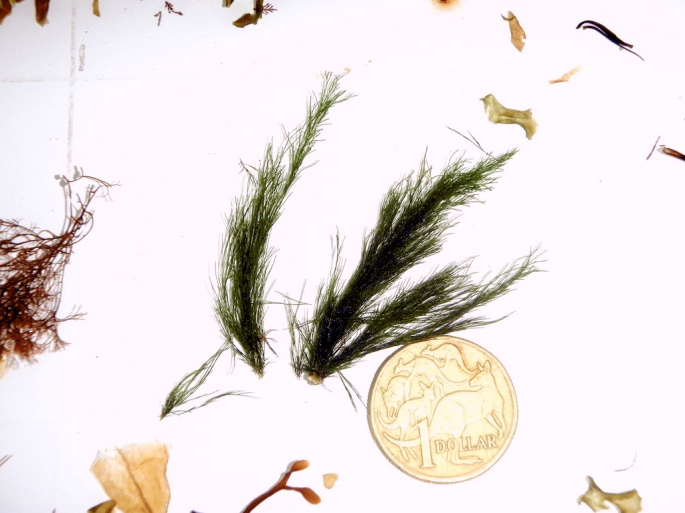 Image A. Specimen growing on rock from a low intertidal pool at Tiner Pt., Bay of Fundy, NB (GWS044247).
Image A. Specimen growing on rock from a low intertidal pool at Tiner Pt., Bay of Fundy, NB (GWS044247).
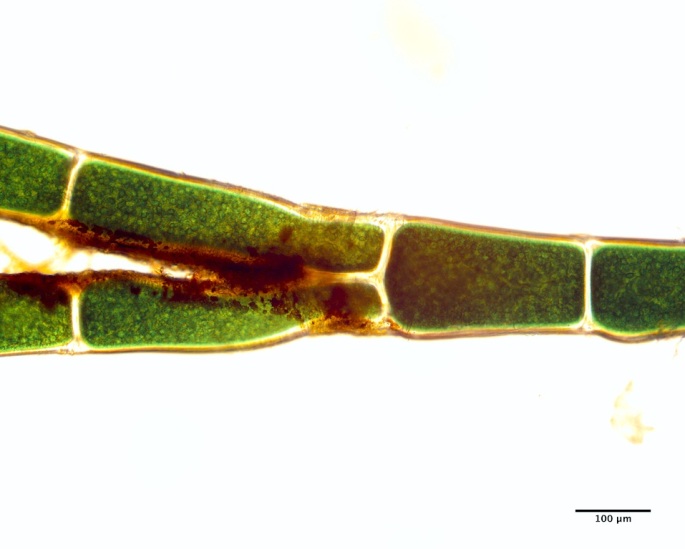 Image B. Whole mount showing the uniseriate filaments and typically terminal mode of branching in this genus (GWS044247).
Image B. Whole mount showing the uniseriate filaments and typically terminal mode of branching in this genus (GWS044247).
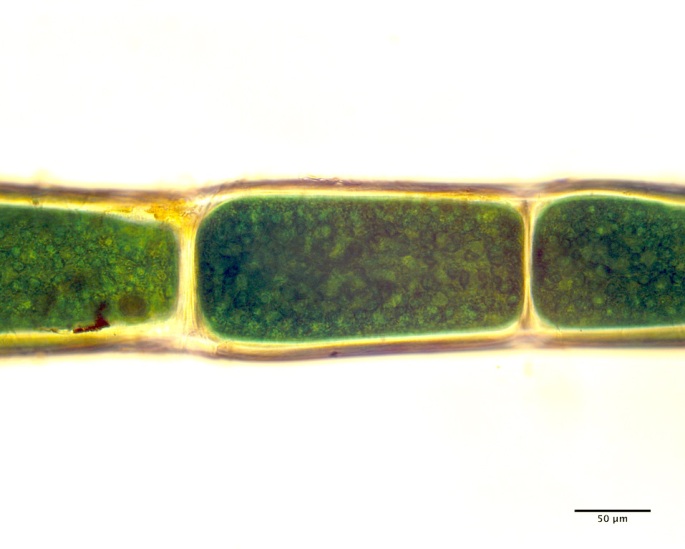 Image C. Whole mount showing the net-like parietal plastid(s) containing multiple pyrenoids. (GWS044247).
Image C. Whole mount showing the net-like parietal plastid(s) containing multiple pyrenoids. (GWS044247).
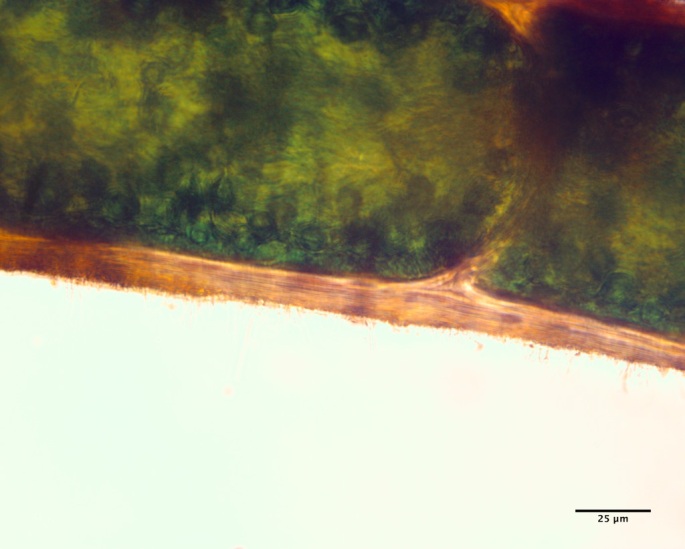 Image D. Whole mount showing the thickened and lamellate nature of older cell walls. (Musquash Head Light, NB; GWS044251).
Image D. Whole mount showing the thickened and lamellate nature of older cell walls. (Musquash Head Light, NB; GWS044251).
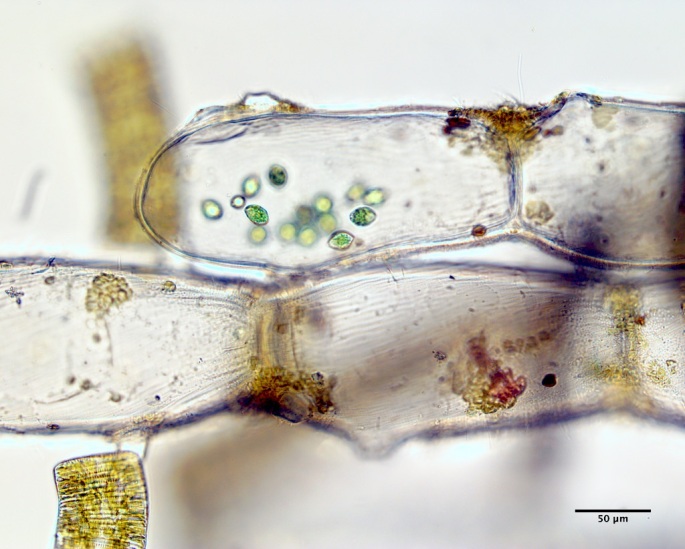 Image E. Whole mount showing cells converted to reproduction each with an obvious aperture for zooid release; one cell still contained swimming zooids when the image was taken (Musquash Head Light, NB; GWS044251).
Image E. Whole mount showing cells converted to reproduction each with an obvious aperture for zooid release; one cell still contained swimming zooids when the image was taken (Musquash Head Light, NB; GWS044251).
